
China's 1st Moon Rover Launches On Lunar Journey
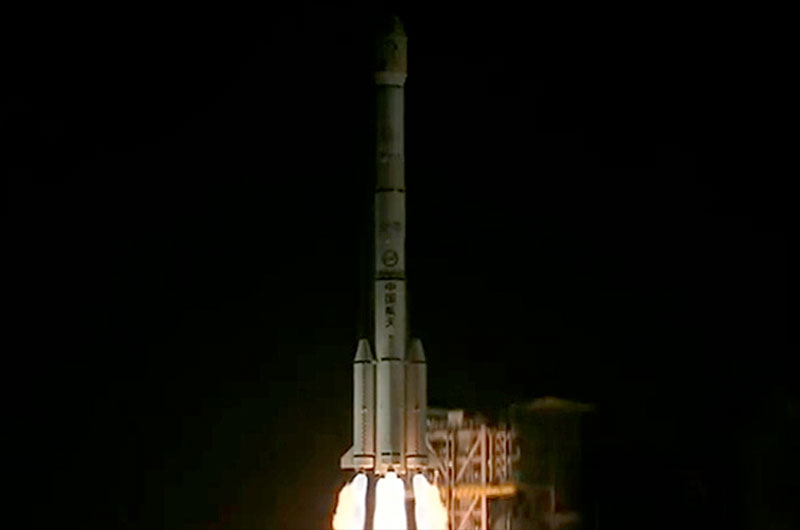
China's first-ever mission to land a rover on the moon has begun its journey to the lunar frontier.
Riding atop a modified Long March 3B rocket, China's Chang'e 3 moon lander and its rover Yutu toward the moon at 1:30 a.m. Monday (Dec. 2) local time from the Xichang Satellite Launch Center in the country's Sichuan province. It was 12:30 p.m. EST (1730 GMT) on Dec. 1 at launch time.
If the probe continues on track, Chang'e 3 will land on the lunar surface by mid-December, becoming the first spacecraft to touch down on the moon in more than 37 years. The moon landing mission was the former Soviet Union's robotic Luna 24 sample return mission in 1976. [Photos: China's Chang'e 3 Mission Blasts Off]
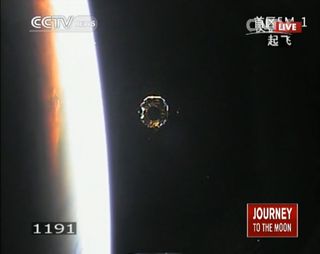
Shortly after the Chang'e 3 spacecraft separated from its rocket, launch officials declared the liftoff a success.
"The Chang'e probe on its way to the moon, of course, is a symbol of China's national prowess," Zhang Zhenzhoung, director of China's Xichang Satellite Launch Center, according to a translation by the state-run CCTV news broadcast. "Let's all work together ... to make more efforts in space exploration and realize the Chinese dream."
Chang'e 3 is expected to touch down by Dec. 14 or 15 to begin conducting scientific surveys on the moon. The mission is China's first-ever landing on the surface of an extraterrestrial body and signals a shift into the second stage of China's lunar exploration program. That program consists of three major steps: orbit the moon, land on the moon, and return moon rock samples to Earth by 2020.
China's first two unmanned moon missions, the Chang'e 1 and Chang'e 2 lunar orbiter flights, launched in 2007 and 2010, respectively.
Get the Space.com Newsletter
Breaking space news, the latest updates on rocket launches, skywatching events and more!
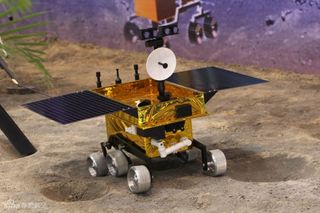
Meet Yutu: China's first moon rover
The Chang'e 3 spacecraft is part lander, part rover, and is loaded with scientific gear.
The lander is expected to touch down in the Sinus Iridum region of the moon, also known as the Bay of Rainbows. Once on the lunar surface, the lander will deploy the Yutu rover — a six-wheel robot that weighs nearly 310 lbs. (140 kilograms).
Yutu, meaning "Jade Rabbit," is the white pet rabbit of the moon goddess Chang'e. The name was selected by the public using Internet websites. Participants around the world cast nearly 3.5 million votes, with Yutu receiving the most votes over a 10 day period. [20 Most Amazing Moon Missions Ever]
Yutu is to patrol the moon for at least three months under control by scientists on Earth. Radar gear attached to the bottom of Yutu is to study the structure and layers of the moon down several hundred feet below topside as the machine crosses the lunar terrain.
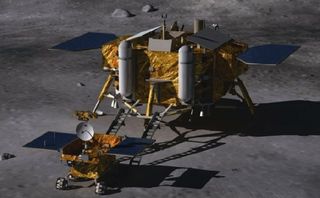
Moon landing's tricky business
Getting the Chang'e 3 lander and rover on the moon is tricky business. The spacecraft's powered descent phase in the lunar soft-landing process will not be a long period of time, roughly 700 seconds.
The lander is equipped with high-precision, fast-response sensors to analyze its motion and surroundings. A variable thrust engine is employed to slow the spacecraft down as it drops toward the moon. The landing depends on the successful use of devices to track the probe's distance to the moon and descent velocity, as well as terrain recognition and obstacle avoidance sensors.
The Chang'e 3 lander is outfitted with an extreme ultraviolet camera that can monitor the Earth to study the formation of the planet's plasmasphere, or inner magnetosphere, and its density change, according to Chinese space scientists. The lander also carries optical telescope gear for astronomical surveys.
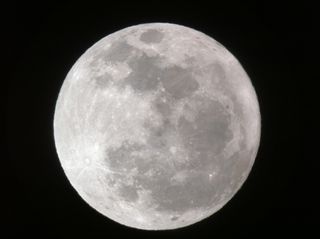
In a CCTV.com interview, Ouyang Ziyuan, a senior advisor of China's lunar probe project, said the lander will hover above the moon at about 330 feet (100 meters).
"Then using special cameras it will look for a flat place to land on. Then when it's about 4 meters above ground, its engine will stop," Ouyang said. "The lander's four legs are shockproof and will ensure a soft landing."
Chang'e 3 deployed its landing legs shortly after separating from its Long March 3B rocket.
The lander will start work immediately after landing on the moon by observing space using an optical telescope, Ouyang said.
One tough test the Chang'e 3 mission must pass is withstanding the extreme cold conditions on the moon. To do so, both the lander and the rover will go into the lunar-night sleep mode. By using radioisotope heater units (RHU) and specially designed fluid loops, Chinese space engineers expect the moon hardware to survive the plunging temperature.
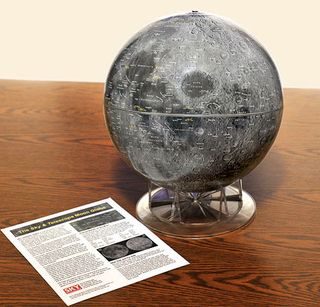
Tracking China's moonshot
The Chang'e 3 launch marked the 25th launch of the Long March 3B rocket — currently the most powerful launch vehicle in China's Long March rocket fleet — occurred in a narrow launch window just four minutes long.
Shortly after liftoff, the European Space Agency's ground station in Kourou, French Guiana, started receiving signals from the mission and uploading commands on behalf of the Chinese Chang'e 3 control center. The effort is being run from the Estrack Control Center in ESA's European Space Operations Centre in Darmstadt, Germany.
"We picked up signals from Chang'e 3 from our Kourou station at 18:34 UT, a bit earlier than planned," said ESA's Gerhard Billig, systems engineer at ESOC. "We'll have communication passes again starting on Dec. 4 daily until arrival at the moon, expected on Dec. 6."
The ESA tracking assist will run daily throughout Chang'e 3's five-day cruise to the moon. ESA deep-space ground stations are to help out during descent and after landing, pinpointing the probe's path and touchdown locale.
"We had no problem receiving their signals, as we're both following internationally agreed technical standards" Billig told SPACE.com. "This really makes all the difference for the cooperative support we provide to not only the Chinese but also to our Japanese, Russian and U.S. partners."
The landing and rover operations on the moon will be commanded via two Chinese tracking stations at Kashi, in the far west of China, and at Jiamusi, in the northeast.
Visit SPACE.com for the latest news on China's space missions and the Chang'e 3 moon landing.
Leonard David has been reporting on the space industry for more than five decades. He is former director of research for the National Commission on Space and is co-author of Buzz Aldrin's new book "Mission to Mars – My Vision for Space Exploration" published by National Geographic. Follow us @Spacedotcom, Facebook and Google+. Original article on SPACE.com.
Join our Space Forums to keep talking space on the latest missions, night sky and more! And if you have a news tip, correction or comment, let us know at: community@space.com.

Leonard David is an award-winning space journalist who has been reporting on space activities for more than 50 years. Currently writing as Space.com's Space Insider Columnist among his other projects, Leonard has authored numerous books on space exploration, Mars missions and more, with his latest being "Moon Rush: The New Space Race" published in 2019 by National Geographic. He also wrote "Mars: Our Future on the Red Planet" released in 2016 by National Geographic. Leonard has served as a correspondent for SpaceNews, Scientific American and Aerospace America for the AIAA. He has received many awards, including the first Ordway Award for Sustained Excellence in Spaceflight History in 2015 at the AAS Wernher von Braun Memorial Symposium. You can find out Leonard's latest project at his website and on Twitter.